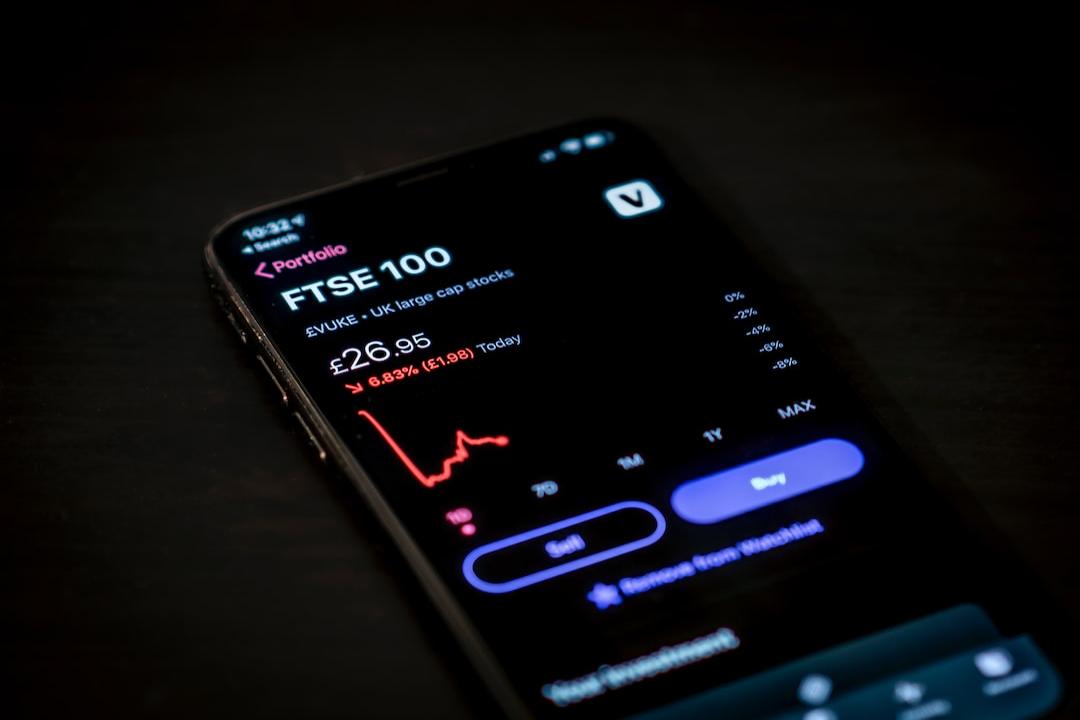HTC Enters the Smart Glasses Arena!
Targeting the market gap in Taiwan, HTC competes alongside major players such as Meta and Google.
HTC Breaks into the AI Glasses Market!
The Taiwanese electronics brand HTC held a press conference on August 14 to announce the launch of its new product line, the HTC VIVE Eagle smart glasses, which will be available in the Taiwanese market starting September 1, priced at NT$15,600.

HTC unveils its new product, the VIVE Eagle smart glasses.
Image credit: Su Yi-Chan
The HTC VIVE Eagle features a semi-transparent design, emphasizing its positioning as a fashionable accessory. It supports photo and video capture, multi-language translation, and interaction with an AI assistant, boasting a battery life of up to 36 hours. HTC emphasizes that this product is “tailor-made for Taiwanese users,” enhancing its traditional Chinese capabilities, and the design is specifically adapted to the head shape of Taiwanese people.

HTC VIVE Eagle smart glasses are positioned as a fashionable accessory.
Image credit: HTC
Pricing Information
- Price: NT$15,600
- Sales Start Date: September 1 in the Taiwanese market.
- Sales Channels:
- Taiwan Mobile: Available at all physical stores and online stores (designated plans starting from NT$0)
- 2020EYEShaus: Includes optometry and fitting services.
Specifications and Features: Ultra-light Body, The Most “Taiwanese” AI Assistant
The HTC VIVE Eagle glasses weigh only 49 grams and are available in four colors: black, red, coffee, and gray, emphasizing a fashionable design with a popular semi-transparent style that allows a glimpse of the internal components, highlighting its technological feel. The nose pads and temples are adjustable, and the frame is specifically designed for the head shape of Taiwanese users.

VIVE Eagle offers four color options.
Image credit: HTC

HTC VIVE Eagle’s semi-transparent design.
Image credit: Su Yi-Chan

The actual wearing effect of VIVE Eagle.
Image credit: Su Yi-Chan
Since these are everyday wear glasses, HTC has partnered with boutique eyewear retailer 2020EYEShaus, allowing customers to get eye exams, try them on in physical stores, and select sunglasses accessories.

HTC VIVE Eagle at the 101 store location of 2020EYEShaus.
Image credit: Su Yi-Chan
Hardware Specifications
The HTC VIVE Eagle is powered by Qualcomm’s AR1 Gen1 chip designed for smart glasses and comes equipped with a 12-megapixel ultra-wide camera module, with a light indicator when taking photos. It also features “wear detection,” preventing the camera from activating when not worn, addressing concerns about privacy.
The device contains a built-in 235mAh battery, with official data indicating a daily usage time of up to 36 hours and continuous music playback for nearly 4.5 hours. It supports magnetic fast charging with “charge while using” capability, allowing approximately 50% battery replenishment in just 10 minutes, and can quickly resume use when connected to a power bank.
For calls and music, HTC emphasizes a stronger “leakage suppression” technology compared to competitors. Although sound is emitted through open speakers, HTC’s proprietary technology makes it difficult for outsiders to hear call or music content while also employing self-developed noise reduction technology to enhance call quality.

HTC emphasizes the audio quality of the smart glasses.
Image credit: Su Yi-Chan
With an open audio design and a directional microphone array, combined with HTC’s proprietary noise reduction and leakage suppression technology, call quality and privacy are enhanced. The device supports magnetic fast charging, achieving 50% charge in 10 minutes, with a total battery life of 36 hours, and can be used while charging.
Software and AI Features
As an AI smart glass, AI is naturally the central feature of the experience. The HTC VIVE Eagle adopts HTC’s self-developed “VIVE AI platform,” which can connect to mainstream large language models such as Google Gemini and OpenAI GPT, allowing users to switch based on their needs.
The activation command is simply “Hey VIVE” or by pressing a button on the device, awakening the voice assistant. Various features were demonstrated on-site, including basic photo and video capture, translating menus while traveling, or recognizing objects and buildings for the VIVE assistant to query and describe using voice.

Menu translation application scenario while traveling.
Image credit: Su Yi-Chan

Smart glasses can free your hands while taking photos.
Image credit: Su Yi-Chan
After the launch, support for translation in 12 languages including Chinese, English, Japanese, Korean, Spanish, and French is available. HTC also emphasizes that the traditional Chinese system has been specially calibrated by HTC’s engineering team to achieve a level of accuracy rarely seen in the market, catering to the needs of Taiwanese users. Additionally, user data will be encrypted, and the system will not track user behavior or utilize it for any AI model training.
Market Strategy: Is NT$15,000 Too Expensive? Targeting the Taiwanese Market
The reason HTC chose to launch smart glasses, according to Senior Vice President Huang Chao-Ying, is that previously, VR head-mounted displays were mainly used in gaming or enterprise scenarios and had yet to enter the daily lives of the general public. However, smart glasses, being lightweight and naturally wearable, are more easily accepted by the market. “Aside from smartphones and smartwatches, the next item people will be willing to wear is smart glasses.” He believes that advancements in AI services and voice recognition, combined with cloud computing and HTC’s years of accumulated wearable technology, enable the product to balance practicality and fashion, effectively filling the current market gap.
The first product is exclusively targeted at the Taiwanese market, with the first batch launching exclusively in Taiwan on September 1. In addition to enhancing traditional Chinese capabilities, it emphasizes “made in Taiwan.” Huang Chao-Ying states that even though HTC has announced the sale of part of the VIVE team to Google, there remains a sufficient R&D and production workforce. The team is not newly formed but consists of members from the past head-mounted device team, responsible for the project, and manufacturing will be handled by HTC’s own factory in Guishan, Taoyuan. The development process for the lightweight VIVE Flow head-mounted device has laid the foundation for the team’s expertise in producing glasses, allowing for the rapid launch of this new product.

HTC emphasizes that the first generation of VIVE Eagle is entirely targeted at the Taiwanese market.
Image credit: Su Yi-Chan
The suggested retail price for VIVE Eagle in Taiwan is NT$15,600. For comparison, Meta’s collaboration with Ray-Ban to launch similarly specified smart glasses is priced at $299 (approximately NT$8,960). Regarding concerns about the high price, Huang Chao-Ying responded that HTC set this price point based on recommendations from channel partners, believing that compared to high-end branded glasses priced in the tens of thousands, this price is not particularly high. At the same time, he emphasized that the VIVE Eagle offers significant differences in multi-language support, call noise reduction, long battery life, and other functionalities, thus having confidence in its functional and value proposition.

HTC Senior Vice President Huang Chao-Ying.
Image credit: HTC
Future Timeline for New Smart Glasses
Huang Chao-Ying revealed that due to the rapid changes in the current market, it is increasingly difficult for hardware products to use “years” as a unit of iteration, and plans for new products may emerge in just a few months. He also emphasized that these will not replace mobile phone products, with the current main research direction focusing on how to enhance the collaboration capabilities between phones and glasses.
Regarding overseas markets, Huang Chao-Ying admitted that they are still in the planning stage and have yet to set a specific timeline. One significant reason is the notable differences in head shapes and wearing needs among various ethnic groups; for example, European and American consumers tend to have wider head shapes and higher nasal bridges. To ensure wearing comfort, frame sizes, nose pads, and temple designs may need to be redeveloped for different markets, and local optometry, fitting, and after-sales service systems must be established to ensure consumer experience. Therefore, time is still needed to arrange the overseas launch plans, but there will definitely be progress toward global markets. The Asian region, due to closer facial and head measurements, may have the opportunity to launch ahead of Europe and America.
This article is a collaborative reprint from: Digital Age
Further Reading:
Securing exclusive first sales of AI glasses, why is Taiwan Mobile pursuing “atypical” business? Three major strategies targeting a million-level market!
Samsung Galaxy Z Fold 7 Review|The biggest innovation in hardware history! Is it slimmer than the iPhone, and has the crease vanished? Highlights in one glance.

